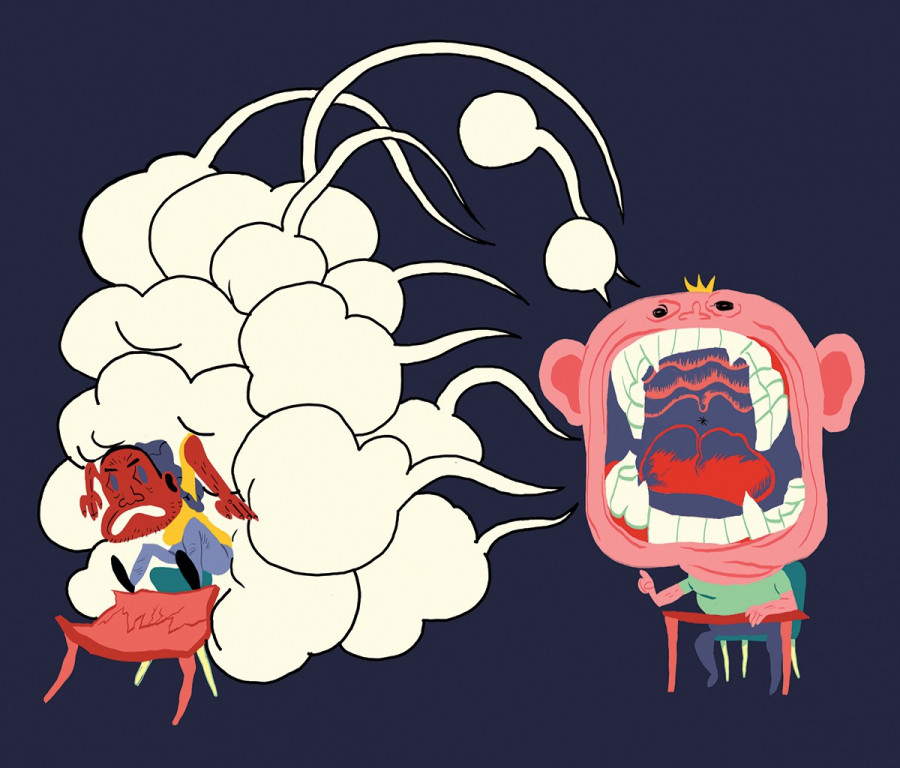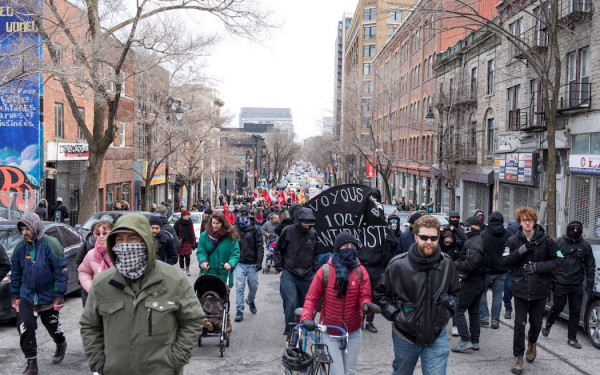Understanding the Origins of the Alt-Right
A flier went up on telephone poles last week in Toronto.
Similar ones have been spotted elsewhere in Canada and the United States.
It read:
“Hey White Person! Sick of being blamed for all the world’s problems? Tired of being told you’re ‘racist’ for celebrating your heritage? Join the Alt-Right!”
If you’re horrified by the implications of this, you’re not alone. But before you go out and fight, it’s important to understand the American origins of the alt-right, its resurgence, and what we can do about it here.
There’s a big elephant in the room called Donald Trump—but I don’t want to spend too much time repeating the same things dozens of people have already written. More important to discuss are Trump’s supporters and the emerging white nationalism of the alt-right.
The Southern Poverty Law Center, a U.S. based legal advocacy organization, has been publishing updates on far-right organizing for decades. Recent reports from 2015 illustrated the cyclical resurgence of white nationalism in response to Barack Obama’s presidency. In the wake of Obama’s election, law enforcement, anti-fascists, and academics alike focused their attention on street-based white nationalist mobilization.
This is understandable given the destructive capacity of paramilitary movements, but what was lost in this focus was the role that universities and the internet played in the rebranding of white nationalism into what today is called the “alt-right.”
Shedding traditional far-right symbolism in favor of internet memes, suits, and lecture halls, the alt-right has mobilized a demographic that would later play a key role in electing Trump—young, educated, middle class white people.
The alt-right is an ideological blanket that wraps up old ideas in new ways. The term was officially coined in 2008 by Richard Bertrand Spencer of the National Policy Institute, an extreme-right think-tank.
It is a broad term that encompasses many—and sometimes contradictory—ideas. General tendencies include a rejection of liberal universalism, an emphasis on libertarian social organization, and of “scientific” racism. Supporters include many reactionary strands—men’s rights activists, anti-immigrant nativists, and neo-Nazis. This may sound familiar—white nationalism hasn’t changed much, but its mobilization strategies have.
As chairman of the NPI, Spencer oversaw pseudo-academic publications on white identity. Co-opting the language of various national struggles, the NPI argues for the creation of the white ethno-state, rejects traditional conservatism as corrupt and dominated by corporate money, and publishes pseudo-scientific articles on racial differences similar to 19th century research on eugenics and phrenology. Through this professional veneer, Spencer seeks to normalize white nationalist discourse, and is quite conscious of the need to separate the alt-right from previous manifestations of white supremacy.
He has even denounced other alt-right leaders such as Matthew Heimbach of the Traditionalist Workers Party for his homophobic rhetoric. The NPI website hosts flashy videos emphasizing the importance of white identity through individual cultural heritage. They decry the alienating forces of globalization, consumerism, and multiculturalism, saying things like: “A country for everyone is a country for no one.” This discourse directly targets disaffected youth and provides a thorough, professional-looking movement to easily plug into.
The attention that alt-right groups pay to young people is clear from their early mobilizations. One campaign that resulted from this political force is Gamergate—an anti-feminist attack specifically against women, and more broadly against progressive values and so-called political correctness, in video games in 2014. Organized online harassment of women and trans gamers became a violent spiral of death threats, sexual harassment, and offline consequences carried out using the Gamergate hashtag.
A key figure of this campaign was Milo Yiannopoulos. Railing against what he saw as the politicization of videogames, Yiannopoulos used his clout as a journalist to platform far-right conservatism and champion the harassment of Gamergate’s targets. In 2015 he became the tech editor for the proto-fascist Breibart.
There are several takeaways from Gamergate. Concentrated campaigns of harassment and digital violence—coordinated by leadership figures like Yiannopoulos and mobilized online forums like 4chan and reddit—easily overwhelm their targets. Defending against this is incredibly complicated as existing laws are woefully unable to regulate hate and violence through the Internet.
What should become clear is the need for computer security and privacy on the part of social organizers. We must consider the Internet a double-edged sword and protect ourselves. Basic things like hiding personal photos; information such as workplace, family, and romantic partners; and a healthy dose of skepticism of friend requests from people you don’t know are simple steps to protect one’s information. Other steps such as using Virtual Private Networks, spoof accounts, and computer encryption are other essential steps beyond the scope of this work.
It is important to acknowledge that today’s white nationalism radicalizes through banal forms of political engagement. Yiannopoulos is gay, advocates free speech, and positions himself as a defender of ethics in journalism—hardly the typical profile of a white nationalist. As Spencer’s NPI shows, these groups have learned from their own history and now exploit liberal notions of inclusivity to platform hate.
So, how do we confront them?
Debating rebranded white nationalists only legitimizes their arguments as something to be considered in the first place. One of their weak points is their need for normalization to break the stigma their historical predecessors have rightfully earned as a violent hate movement.
The election of Trump has propelled white nationalism into mainstream media discourse and it’s essential that we continue to call the alt-right what it is: fascistic racists advocating ethnic cleansing. Their organizers can be identified, their meetings disrupted, and the contradictions of their movements exposed to public eye.
Strong communities can de-radicalize youth who have fallen in with the alt-right, and demonstrate alternatives to economic and social precariousness. Above all we must take them seriously. We must confront hate in all its banal forms—because it only takes a spark to accelerate discontent into a blaze of terrifying implications.




1_600_375_90_s_c1.jpg)

_600_375_90_s_c1.jpg)